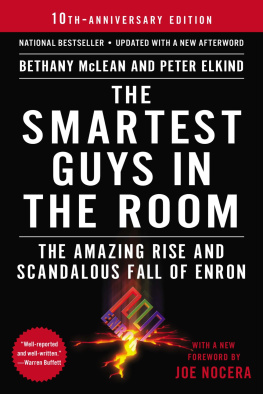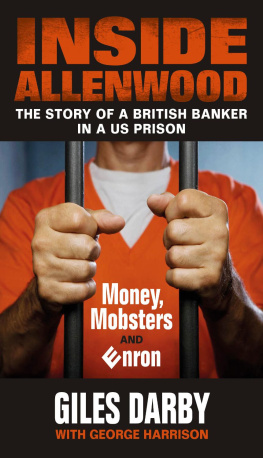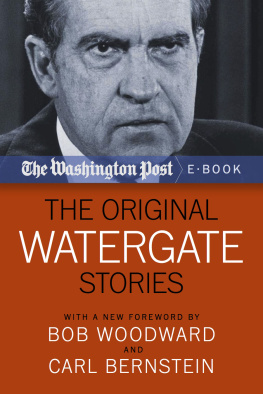PORTFOLIO / PENGUIN
THE SMARTEST GUYS IN THE ROOM
Bethany McLean and Peter Elkind were Fortune senior writers when this book was originally published in 2003.
McLeans March 2001 article in Fortune, Is Enron Overpriced? was the first in a national publication to openly question the companys dealings. She now lives in Chicago with her husband, Sean Berkowitz, who was the head of the Enron Task Force when they met in 2006. McLean is a contributing editor at Vanity Fair and a columnist at Reuters.
Elkind, an award-winning investigative reporter, is the author of The Death Shift and Client 9: The Rise and Fall of Eliot Spitzer. A former editor of the Dallas Observer, he has been an associate editor at Texas Monthly and written for The New York Times Magazine and The Washington Post. Now editor-at-large at Fortune, he lives in Fort Worth, Texas.
For Chris
B.M.
For Laura
P.E.
PORTFOLIO / PENGUIN
Published by the Penguin Group
Penguin Group (USA) LLC
375 Hudson Street
New York, New York 10014

USA | Canada | UK | Ireland | Australia | New Zealand | India | South Africa | China
penguin.com
A Penguin Random House Company
First published in the United States of America by Portfolio, a member of Penguin Group (USA) Inc., 2003
Updated paperback edition published 2004
This edition with a new foreword and afterword published 2013
Copyright 2003, 2004 by Fortune, a division of Time, Inc.
Foreword copyright 2013 by Joe Nocera
Afterword copyright 2013 by Bethany McLean and Peter Elkind
Penguin supports copyright. Copyright fuels creativity, encourages diverse voices, promotes free speech, and creates a vibrant culture. Thank you for buying an authorized edition of this book and for complying with copyright laws by not reproducing, scanning, or distributing any part of it in any form without permission. You are supporting writers and allowing Penguin to continue to publish books for every reader.
Grateful acknowledgment is made for permission to reprint the following copyrighted works: Hotel Kenneth Laya by James A. Hecker, 1995 James A. Hecker. Used with permission; Perfect Day by Tim James and Antonina Armato, 2001 WB Music Corp., Out of the Desert Music, and Tom Sturges Music o/b/o Antonina Songs. All rights reserved. Used by permission of Warner Bros. Publications U.S. Inc. and Tom Sturges Music.
THE LIBRARY OF CONGRESS HAS CATALOGED THE HARDCOVER EDITION AS FOLLOWS:
McLean, Bethany.
The smartest guys in the room : the amazing rise and scandalous fall of Enron / Bethany
McLean and Peter Elkind.
p. cm.
Includes index.
ISBN 978-1-59184-008-4 (hc.)
ISBN 978-1-59184-660-4 (pbk.)
ISBN 978-0-698-15882-5 (eBook)
l. Enron Corp.History. 2. Energy industriesCorrupt practicesUnited States. 3. Business failuresUnited StatesCase studies. I. Elkind, Peter. II. Title.
HD9502.U54E5763 2003
333.79'0973dc21
Version_1
AUTHORS NOTES AND ACKNOWLEDGMENTS
Enron is well on its way to becoming the most intensively dissected company in the history of American business. This book is published as that process continues, with investigations and litigation that will surely drag on for years. Because our aim has been to chronicle the companys rise and fallamazing and scandalous indeedwe have deliberately ended our narrative with Enrons filing of the largest bankruptcy case in U.S. history. We leave it to others to describe the resulting investigations and trials, as well as the jockeying over Enrons spoiling remains.
Enrons story is a sprawling tale, and, during the 16 months of intensive reporting that produced this book, it has taken us down many trails. A good portion of our work involved poring through a mountain of public and private documents involving Enron and the colorful cast of playersexecutives, bankers, auditors, lawyers, investors, and analystswho appear in these pages. We have reviewed divorce records, executive calendars, personnel files, court records, depositions, personal e-mails, letters, consultants studies, internal memos and presentations, board minutes, SEC filings, congressional testimony, and dozens of reports from Wall Street analysts. This massive written record, much of it contemporaneous with what we describe, has provided an extraordinary window into events involving Enron.
Ultimately, though, this is a story about people. We believe we have gained considerable insight into the thinking and behavior of virtually every major character in this book. We have conducted hundreds of interviews with people who worked at every level of the company, from the fiftieth-floor executive suite to the board of directors to the secretarial pool, in addition to scores of others who worked outside Enron. Yet for an assortment of understandable reasonsin some cases, involving the continuing criminal investigations; in other cases, involving the stigma that results from any association with Enronmany of those who spoke to us insisted on talking on background only. Under this arrangement, the information provided was on the recordwe could use it freelybut we could not identify the source by name. This allowed many sources who would otherwise have been constrained to speak openly to us. On occasion, with those who saw themselves as likely government targets, facing possible surveillance, our arrangements assumed a cloak-and-dagger quality, with clandestine meetings arranged through coded messages. A few other individuals discussed events in great detail but only through trusted personal surrogates. The result is a book that relies, in considerable part, on unnamed sources.
We are exceedingly grateful for the cooperation, trust, and patience of all those (both named and unnamed) who spoke with usin more than a few cases, a dozen times or more. Their participation in this project was an act of faith, and their insight has been invaluable.
This book was made possible through the support of Fortune magazine. The idea for it took hold shortly after Enron filed for bankruptcy, when we realized that there was an extraordinary and compelling business narrative in the companys collapse and that we wanted to tell that story. We also realized something else: piecing together the fall of Enron was going to be an unusually challenging reporting task. For the reasons discussed above, many of the principals were hardly in a position to talk publicly about their experience. Enrons financial machinations were also complicated, requiring considerable time and effort to understandand then to explain.
What made our work manageable was the active involvement of Joseph Nocera, editorial director for the magazine. He served as impresario for this project, guiding us as we did our reporting, then acting as editor extraordinaire once we started writing. He is a true partner in the creation of this book. We are grateful to his wife, Julie Rose, too, who lived through the challenging times of this endeavor along with the rest of us.
Rik Kirkland, Fortunes managing editor, allowed us to dedicate a year and a half to this project and never wavered from his strong and vocal support. Jeff Birnbaum tapped into his wealth of Washington sources, landing key interviews and pulling together the Washington angles to the Enron story. Colleagues Carol Loomis, Carrie Welch, Laury Frieber, Pattie Sellers, Tim Smith, David Rynecki, David Kirkpatrick, and John Helyar were generous with their advice and wisdom. Brian OReilly shared the extensive interviews he conducted with Enron executives for his story, The Power Merchants, published in









